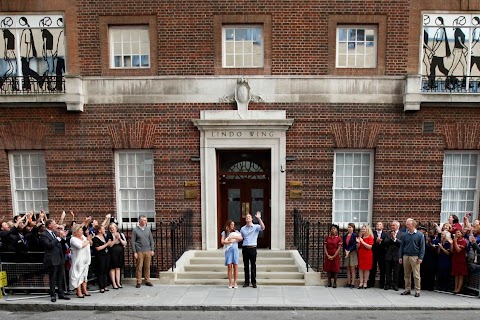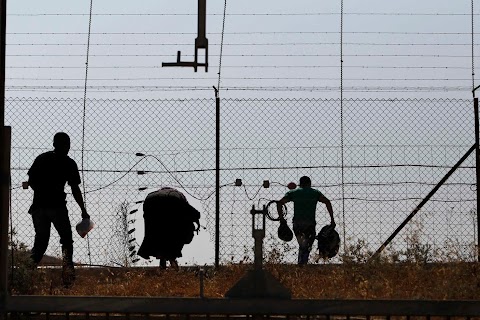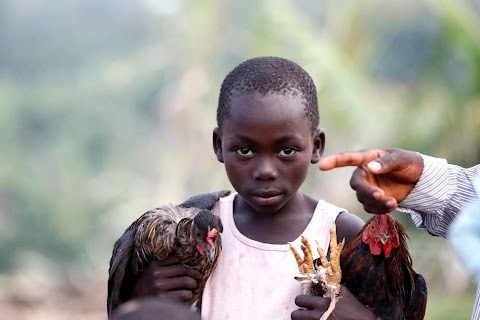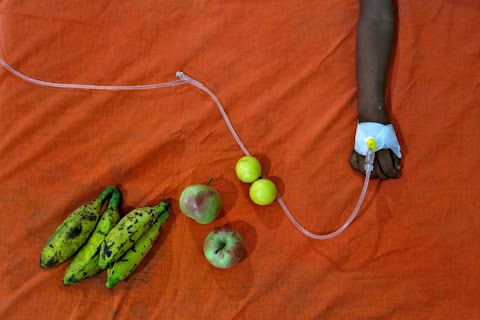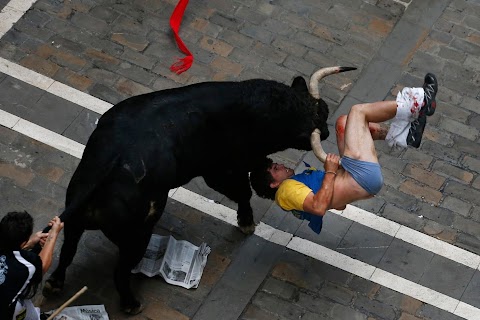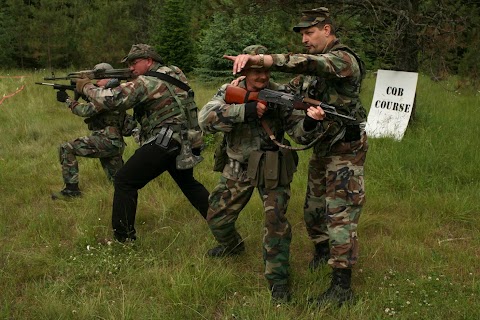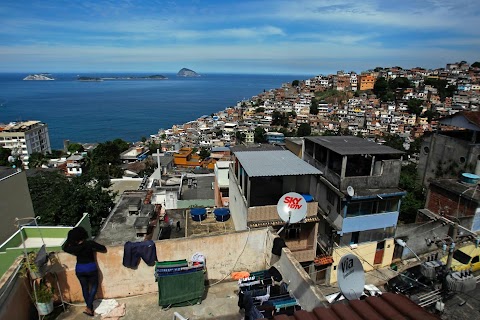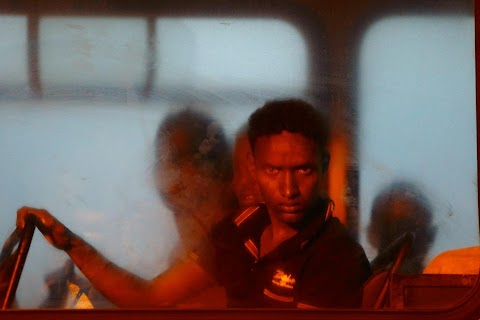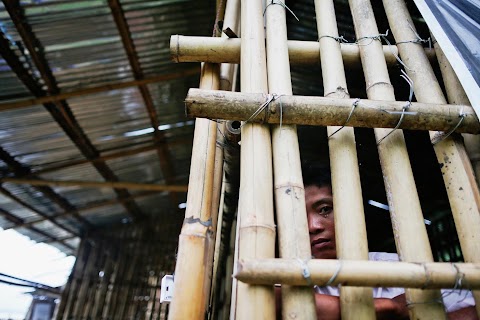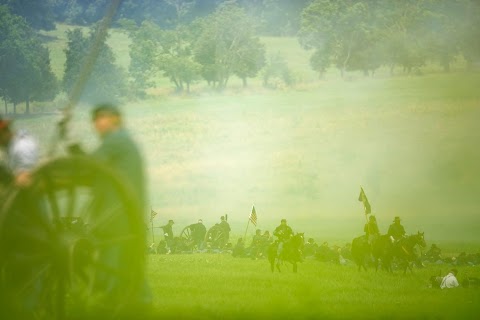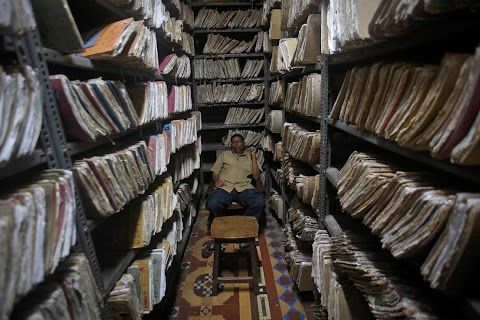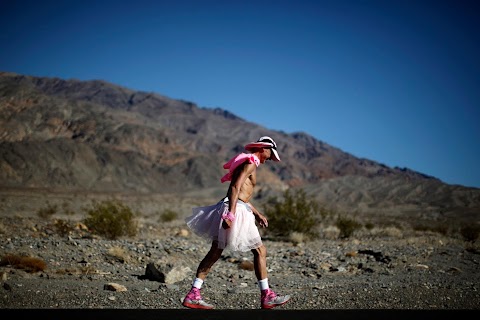
The toughest foot race on earth
 Lucy Nicholson
Lucy Nicholson
Keith Straw might have chosen to wear a tutu to compete in the Badwater Ultramarathon, but his light-hearted outfit does not detract from the deadly seriousness of the challenge he faces. He is attempting to cover the equivalent of more than five marathons back-to-back in less than 48 hours, starting in Death Valley and finishing on Mt. Whitney, while braving temperatures that can reach 130 degrees Fahrenheit (55 Celsius).

Fifty-two-year-old Shannon Farar-Griefer of Hidden Hills, California, has withstood the gruelling distances and extreme heat to finish this 135-mile race five times.
When she first ran the Badwater Ultramarathon in 2001, she felt fresh enough at the finishing line to turn around and head all the way back to the start again.
Farar-Griefer can be heard speaking about her experience of running extreme races in the accompanying audio track.

Farar-Griefer has since been diagnosed with multiple sclerosis, and has once completed the Badwater Ultramarathon after finding out that she had the disease.
This year, however, her body was pushed to the limit. She had to lie down on a blanket by the side of her team van as she made her way across the scorching desert. Although she got up once again and made herself go further, she was eventually forced to pull out.
“I gave the race everything I had and more,” she said.

For 51-year-old Chris Moon, a British army veteran who lost his right arm and leg in an explosion in Mozambique, this was his fifth Badwater Ultramarathon.
“It’s not the thought of 135 miles through the hottest place on earth at the hottest time of year against some of the world’s toughest ultra athletes, or the pain from blisters on my stump or the thought of projectile vomiting again that fills me with fear.
"It is the thought that I might not do as well as last year and I could fail which haunts me,” he wrote on his blog before the event.
In the end he didn’t beat his 2012 time, but managed to finish in just over 45 hours.
Slideshow

Competitors test their bodies in the Badwater Ultramarathon. All but 15 of the 96 runners who took part finished the course.

Forty-one-year-old Oswaldo Lopez of Mexico is doused with water as he runs through Death Valley.

A runner is reflected in a car mirror as he makes his way across the desert, where asphalt has reached temperatures as high as 201 degrees Fahrenheit (93.89 degrees Celsius) in July, and running shoes can melt.

Competitors run across the desert plain.

Forty-six-year-old Ray Sanchez (right) makes the final ascent to the finish line at the foot of Mount Whitney, as his pace setter runs alongside him.

A runner stands bent over on the road as he talks about pulling out of the race, in the middle of the second night.

A trail of headlamps glows beneath the moon as runners make their way to the finish line.

Dawn breaks over Badwater, in Death Valley National Park, the lowest elevation in the Western Hemisphere at 280 feet (89 meters) below sea level.

Competitors walk through Death Valley in the extreme heat.

A runner stands with a Badwater tattoo on his leg.

Lorie Alexander, a 54-year-old from Canada, competes in the race.

Carlos Alberto Gomes De Sa of Portugal (right) runs alongside his pace setter on his way to winning the ultramarathon.

He celebrates his victory at the finish line.

Shannon Farar-Griefer hugs her team before competing in the race.

Thirty-nine-year-old Meredith Dolhare laughs as she cools down after finishing the ultramarathon.

Carlos Alberto Gomes De Sa holds up his Badwater belt buckle after winning the race.
"There was something very moving about watching runners stride toward a goal most of us can’t even fathom, let alone accomplish."
Park Sukhee, 46, had been running and walking for more than 35 hours when he approached the base of Mount Whitney. His friend handed him a South Korean flag and he broke into a jog and a smile. Running ahead of him to take photos, and realising I was his only other spectator, I lowered my camera to applaud his achievement.
Park had just run 135 miles (217 km) from the lowest point in the Western Hemisphere, Death Valley, to the trailhead to Mount Whitney, climbing a total of 13,000 feet (4,000m) over the course, in temperatures that blazed to about 120 degrees Fahrenheit (around 49 degrees Celsius).
The Badwater Ultramarathon bills itself as the world’s toughest foot race. Competitors run, walk and hobble through one or two nights to finish the gruelling course within the 48-hour limit.
When I told people I was covering the race, the typical reaction was: “those people are crazy”. But there was something very moving about watching runners stride toward a goal most of us can’t even fathom, let alone accomplish, smiling proudly as they marched towards the finishing tape.
No cheering spectators in bleachers, no prize money, no television coverage, no security guards. Just a handful of race staff, a few curious hikers, birds chirping in the pine trees, and the glory of receiving a Badwater Ultramarathon belt buckle. And perhaps the euphoria of having run the equivalent of more than five back-to-back marathons through the harsh California desert to reach the beautiful Sierra Nevada mountain range.
“It’s the race to do,” says five-time Badwater finisher Shannon Farar-Griefer, 52, of Hidden Hills, California.
“I love it. In a marathon, at mile 20 people start hitting a wall. That’s when my body starts to feel good.” In her first Badwater Ultramarthon in 2001, Farar-Griefer finished and felt good enough to turn around and run back to the starting line.
Since then she had her third child, and was diagnosed with multiple sclerosis. She finished one Badwater after the diagnosis, but this year the disease took its toll in the blazing heat. In the harsh desert plain Shannon collapsed on a blanket by the side of her team van.
Her crew doused her forehead with iced towels, and gave her fluids. She pulled herself up and walked towards Townes Pass, about 5,000 feet (1,500 meters) in elevation.
Competitors say the race brings out a level of camaraderie not seen in other sports. This year’s winner, Carlos Gomes De Sa from Portugal, and third place finisher Oswaldo Lopez from Mexico, ran over the mountain passes and through the night together before former champion Lopez felt himself tiring and told Gomes De Sa to go for it alone.
Lopez approached the finish line with a posse of cheering followers. After crossing the tape, he gave Gomes De Sa a bear hug. Then he cracked open a beer and ate shrimp with chili with his team.
As the moon rose on the second night, I stood in a turnout on the side of the road as runners made their final mountain ascent. The hazard lights of team vans could be seen below blinking like fireflies along 15 miles of roads stretching across the long valley.
For many of these competitors there was still a long night ahead and thousands of feet to climb. Farar-Griefer’s race ended the night before, a mile shy of Townes Pass, when she was forced to return to the medical centre and pull out of the race.
She had lost eight pounds after vomiting throughout the day and sweating. She had reached the second checkpoint at Stovepipe Wells (41.9 miles) in 11 hours, 45 minutes and pressed on for another 15 miles before she could go no further.
Her formidable strength and determination now has to be directed towards fighting the chronic disease that attacks the central nervous system, a challenge greater than the searing winds of Death Valley. Her doctor has told her she needs to start daily injections or could end up in a wheelchair in a year and a half.
“I gave the race everything I had and more,” she said. She had no regrets.

Competitors run through the scorching heat of Death Valley during the race.
